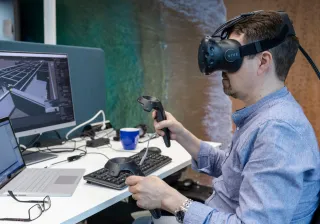Artificial Intelligence (AI) is now being hyped in earnest. The media is full of stories about its achievements: magical algorithms beating humans on their own turf in Jeopardy, the Chinese go-game and Texas hold’ m, not to mention the stock traders and radiologists soon to be displaced by machines. IBM was very clever to name its AI software suite Watson. A bit of mystique is always intriguing.
And that is not all: venture capital is pouring into AI start-ups – 15 billion US dollars since 2012! The number of investment deals increased by a factor of 4.6 between 2012 and 2016. The prices big boys pay for AI companies are amazing – for example Intel paid $15 billion for Israeli company Mobileye, which develops smart vision for future autonomous cars.
But there is also a darker side to this. Many renowned researchers predict that 25–40% of tasks will be automated in around ten years’ time due to robots, autonomous cars and the like, powered by AI. Martin Ford, futurist and author, expressed his fears about this in the book Rise of the Robots: Technology and the Threat of a Jobless Future. Basic income may be a solution, he says.
No need to panic
We should be neither hyped nor alarmed. Instead, we should carefully examine the opportunities AI and automation are bringing to Finland. We should begin by recognising that this change will not be sudden and short lived, but long-term and profound.
I prefer to liken the AI disruption to the change in farming and agriculture driven by mechanisation after the Second World War. Finland was very much an agricultural society, with around half of its people working in farming and forestry. They endured hard work and a poor standard of living. Over the course of five decades, the number of people employed in agriculture and forestry diminished to 2.5% while production rose. This means that productivity expressed as output per working hour has increased by a factor of 20! Most of the people leaving the farms found better paying jobs in industry and services, some of them in Sweden, but most in Finland.
We can expect something similar in the decades to come due to AI and automation.
Productivity will increase – and that is a good thing! This will be needed to compensate for the fall in the number of working age people due to an aging population. Of course, increased productivity could lead to high unemployment and stagnant GDP. But that does not need to be the case. The example of agriculture shows that increasing productivity leads to growing GDP, new jobs (which we cannot yet identify) and a higher quality of life for most people.
Finland a Winner – why?
Why do I believe that Finland will be a winner in the AI disruption? There are a number of reasons:
- Finns have a comparatively high level of education and skills and we are ready to adopt new technology when we see the benefits.
- Cooperation between companies, universities and VTT is close, which means that new ideas flow in both directions.
- Regulations, public servants and government allow and even encourage trials and exploiting the opportunities provided by AI.
- We have a great tradition in applied and basic AI research, due to the legacy of Teuvo Kohonen and Erkki Oja.
Consultancy firm Accenture has also recognised Finland as a top country – alongside the US – in benefiting from AI. According to a recent study by the firm, Finland could increase its annual GDP growth by 2 percentage points in the long run through the widespread adoption of AI technology. Since this is cumulative growth, it would have a huge impact on our lives in the 2030s and beyond. The same study predicts an increase in cumulative productivity of 36% compared to the baseline scenario. By this measure, Finland would be the second best country, losing out to Sweden by one percentage point.
VTT’s AI recommendations
What should we do to achieve this positive situation? VTT recommends the following actions:
- Let’s prepare people for the coming changes and hear the opinions and expectations of citizens in an open discussion.
- We should focus research and development efforts on combining AI technologies with our traditional strengths. These include the process industry, energy, forest harvesters and mining machinery, ships, communication technology, medical and wellness technology, as well as forestry. AI is often introduced in a supportive role as part of a service business.
- When providing public support for company-driven initiatives, the level of ambition should be high and funding should be in relation to the results. This would lead to the genuine growth and creation of competitive ecosystems.
- Ownership of successful AI companies should be retained in Finland. As the AI business is fundamentally a software business, it is by nature scalable. Companies can grow fast and achieve huge revenues. Such gems have been sold abroad too often in the past. Insurance companies should consider their role here.
- Regulation and legislation should allow and incentivise the novel application of AI – as long as the safety and rights of citizens are ensured.
- Education is essential. We must “learn to learn” from elementary school onwards. A specific AI curriculum should be established in two or three universities and other curricula should provide a basic understanding of AI technology and its potential.
There are a number of other important aspects to AI besides those discussed here. Of course, AI technologies and techniques are a fascinating topic and ethical issues are becoming interesting due to the power and transformational nature of AI. We will address these issues in forthcoming blogs.
You can download the VTT’s Policy Brief (in Finnish) here.




